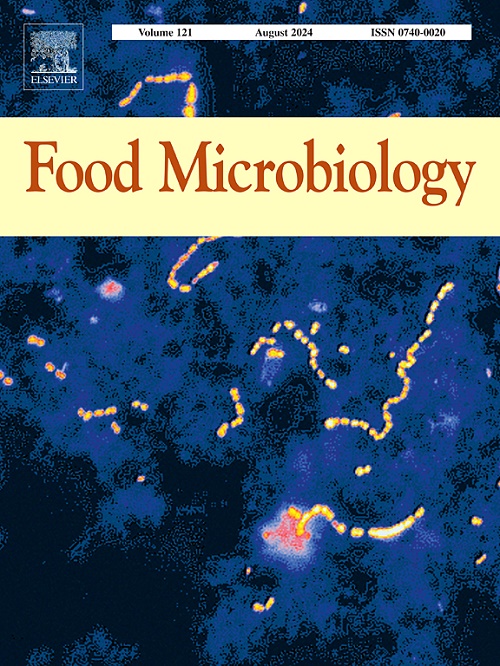Unravelling microbial interactions in a synthetic broad bean paste microbial community
IF 4.5
1区 农林科学
Q1 BIOTECHNOLOGY & APPLIED MICROBIOLOGY
引用次数: 0
Abstract
The biotic factors governing the assembly and functionality of broad bean paste microbiota remain largely unexplored due to its highly complex fermentation ecosystem. This study constructed a synthetic community comprising Zygosaccharomyces rouxii, Staphylococcus carnosus, Bacillus subtilis, Bacillus amyloliquefaciens, Tetragenococcus halophilus and Weissella confusa, representing key microorganisms involved in broad bean paste fermentation. The generalized Lotka-Volterra (gLV) model revealed that the microbial interaction network among the six species was dominated by pairwise interactions. The abundances of most species in the multi-species communities at 2 and 4 days were accurately predicted using the gLV model, based on pairwise species combinations outcomes. Among pairwise interactions, negative interactions (57 %) were significantly more prevalent than positive interactions (37 %), with the former generally being stronger. Subsequent investigations demonstrated that the tested Z. rouxii inhibited acid accumulation by acid-producing bacteria, while the two strains belonging to the genus Bacillus stimulated lactic acid bacteria growth and lactic acid accumulation. The sequential inoculation strategy, informed by the interaction network, enhanced the synthetic community's bioaugmentation in broad bean paste, significantly improving ester and mellow flavors, reducing unpleasant odors, and increasing volatile flavor substances to 9.43 times that of natural fermentation. Overall, this study revealed the interaction network of six key microorganisms in broad bean paste using the gLV model and guided the application of the synthetic community in its fermentation, significantly enhancing flavor quality.
在合成豆沙微生物群落中揭示微生物相互作用
由于其高度复杂的发酵生态系统,控制豆瓣酱微生物群组装和功能的生物因素在很大程度上仍未被探索。本研究构建了一个由rouxii酵母、肉葡萄球菌、枯草芽孢杆菌、解淀粉芽孢杆菌、嗜盐四芽球菌和Weissella confusa组成的合成菌群,代表了蚕豆酱发酵过程中的关键微生物。广义Lotka-Volterra (gLV)模型表明,6个物种之间的微生物相互作用网络以两两相互作用为主。基于两两物种组合结果,利用gLV模型准确预测了2和4 d时多物种群落中大多数物种的丰度。在两两互动中,消极互动(57%)明显比积极互动(37%)更普遍,前者通常更强。随后的研究表明,所试柔氏弧菌抑制产酸菌的酸积累,而属于芽孢杆菌属的两株菌株则刺激乳酸菌的生长和乳酸积累。以交互作用网络为基础的序次接种策略增强了豆瓣酱合成菌群的生物增强作用,显著改善了豆瓣酱的酯味和醇香,减少了豆瓣酱的异味,挥发性风味物质增加,达到自然发酵的9.43倍。总体而言,本研究利用gLV模型揭示了豆瓣酱中6种关键微生物的相互作用网络,并指导了合成菌群在豆瓣酱发酵中的应用,显著提高了豆瓣酱的风味品质。
本文章由计算机程序翻译,如有差异,请以英文原文为准。
求助全文
约1分钟内获得全文
求助全文
来源期刊

Food microbiology
工程技术-生物工程与应用微生物
CiteScore
11.30
自引率
3.80%
发文量
179
审稿时长
44 days
期刊介绍:
Food Microbiology publishes original research articles, short communications, review papers, letters, news items and book reviews dealing with all aspects of the microbiology of foods. The editors aim to publish manuscripts of the highest quality which are both relevant and applicable to the broad field covered by the journal. Studies must be novel, have a clear connection to food microbiology, and be of general interest to the international community of food microbiologists. The editors make every effort to ensure rapid and fair reviews, resulting in timely publication of accepted manuscripts.
 求助内容:
求助内容: 应助结果提醒方式:
应助结果提醒方式:


